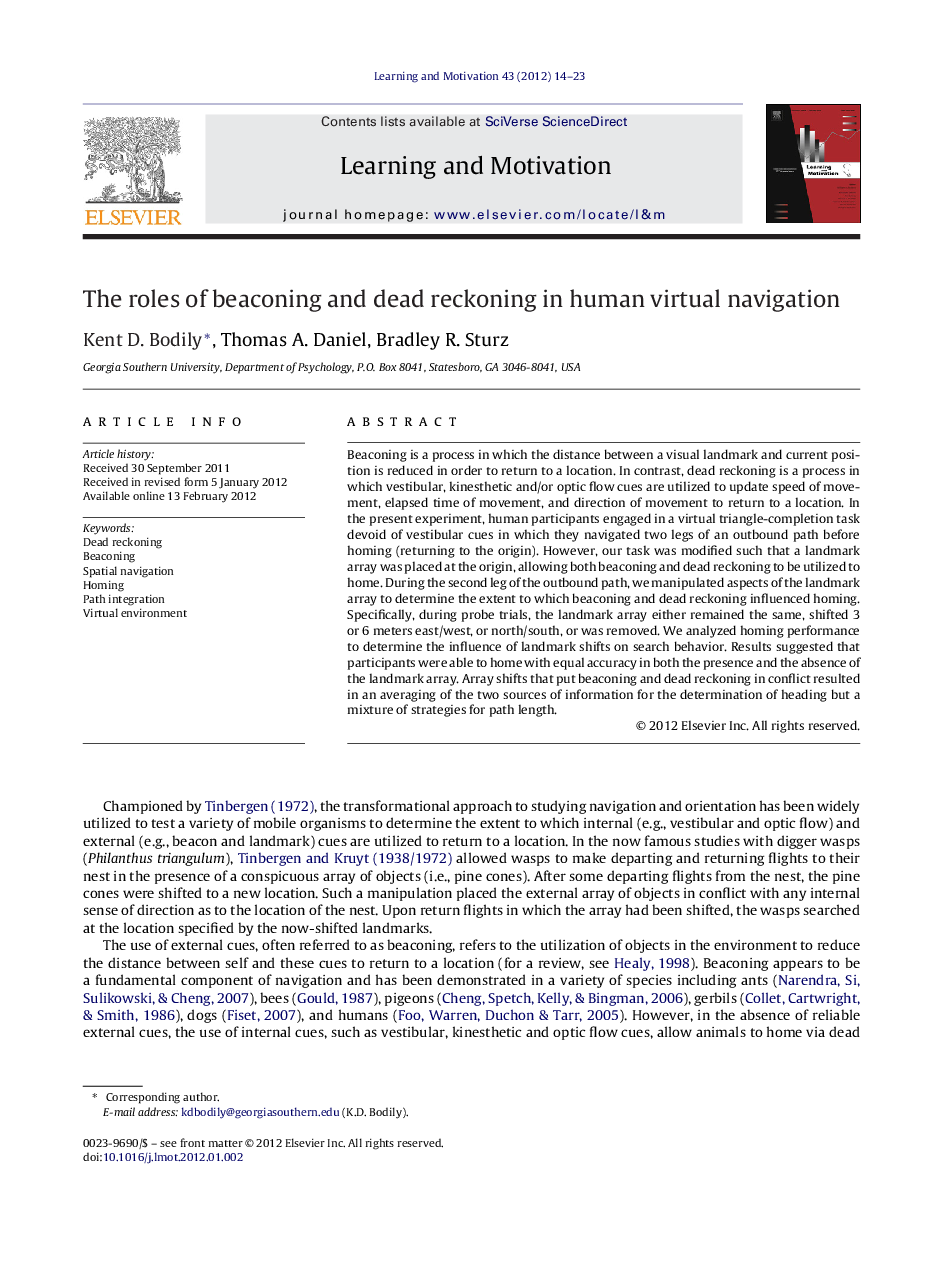| کد مقاله | کد نشریه | سال انتشار | مقاله انگلیسی | نسخه تمام متن |
|---|---|---|---|---|
| 919011 | 1473524 | 2012 | 10 صفحه PDF | دانلود رایگان |

Beaconing is a process in which the distance between a visual landmark and current position is reduced in order to return to a location. In contrast, dead reckoning is a process in which vestibular, kinesthetic and/or optic flow cues are utilized to update speed of movement, elapsed time of movement, and direction of movement to return to a location. In the present experiment, human participants engaged in a virtual triangle-completion task devoid of vestibular cues in which they navigated two legs of an outbound path before homing (returning to the origin). However, our task was modified such that a landmark array was placed at the origin, allowing both beaconing and dead reckoning to be utilized to home. During the second leg of the outbound path, we manipulated aspects of the landmark array to determine the extent to which beaconing and dead reckoning influenced homing. Specifically, during probe trials, the landmark array either remained the same, shifted 3 or 6 meters east/west, or north/south, or was removed. We analyzed homing performance to determine the influence of landmark shifts on search behavior. Results suggested that participants were able to home with equal accuracy in both the presence and the absence of the landmark array. Array shifts that put beaconing and dead reckoning in conflict resulted in an averaging of the two sources of information for the determination of heading but a mixture of strategies for path length.
Journal: Learning and Motivation - Volume 43, Issues 1–2, May 2012, Pages 14–23